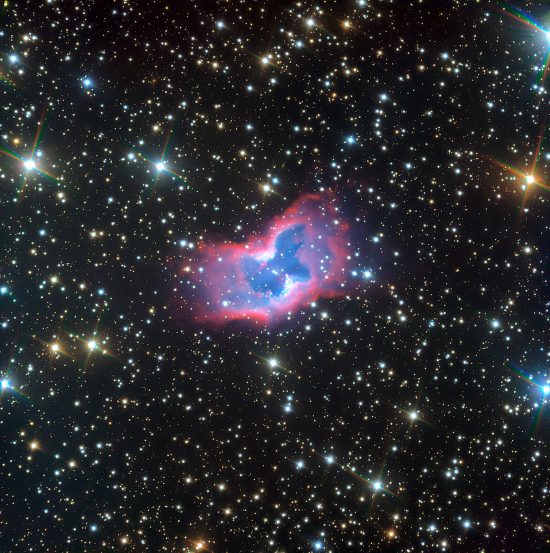
August 3, 2020
The prevailing opinions regarding planetary nebulae involve gases and dust “blowing” through them from “shock waves”.
A nebula is often described as the remnant of a supernova explosion, because of intense X-ray radiation, or extreme ultraviolet light. In an Electric Universe, space is filled with plasma, not hot gas. The physics of electricity applies to plasma and not the physics of wind. Within planetary nebulae are one or more plasma sheaths, or “double layers”, that act like capacitors, alternately storing and releasing electrical energy because of variations in charge flow.
As written many times in the past (and known since the days of Maxwell), charged particles in motion constitute an electric current. An electric current is accompanied by a magnetic field that wraps around the current, diminishing with the square root of the distance. The magnetic field gets stronger when more charged particles move in the same direction or when they move faster. Ions moving through the magnetic field are squeezed toward the axis. Plasma physicists refer to this as the “Bennett pinch.”
An electric discharge in a plasma cloud creates a double layer along its axis. Positive charge builds up on one side and negative charge on the other. A strong electric field exists between the sides, and if enough current is applied the double layer glows, otherwise it is invisible. Double layers and current filaments also respond to the interstellar electric currents in the circuit that threads through the galaxy. They are mostly dark mode phenomena because of their low current density, but the magnetic fields they produce are apparent and detectable in the Bennett pinch zones that arise.
Plasma behavior is unfamiliar, so it is often difficult to discern that plasma is completely different from a gas. Plasma’s similarities to gas are overshadowed by its failure to correspond with gas kinetics. Since more than 90% of the light frequencies from planetary nebulae are in the ionized oxygen range, they should be thought of as oxygen discharge tubes and not balls of gas.
Ideas like this are unfamiliar to astronomers who think in absolute terms of gravity and mass—they seldom think about charges. Moving charges from the Sun are described as a “solar wind” instead of an electric current. Charged particles impacting a planet or moon are called a “rain”, instead of an electrical discharge. Charged particles moving along a magnetic field are called a “jet”, instead of a field-aligned Birkeland current. They think of abrupt changes in the density and speed of charged particles as a “shock wave” instead of a double layer that can even explode.
As astronomer Amy Acheson wrote:
“It’s been over 300 years since Newton encountered his apple, and his conception of gravity, now modified by Einstein and supplemented with similar mechanical theories of solids, liquids and gasses, has become the popular vision of space—an almost-empty universe of self-contained bodies. And now it’s been 100 years since Birkeland encountered his aurora, and his conception of electric currents in space, developed by such pioneers as Irving Langmuir and Hannes Alfven, has been a footnote to standard theory, rarely called upon except to explain the occasional curiosity in space.”
It’s about time that the simple more straightforward explanations are remembered and not the arcane, overly complex hyperbole that seems to be the standard for scientific papers today.
Stephen Smith
The Thunderbolts Picture of the Day is generously supported by the Mainwaring Archive Foundation.












